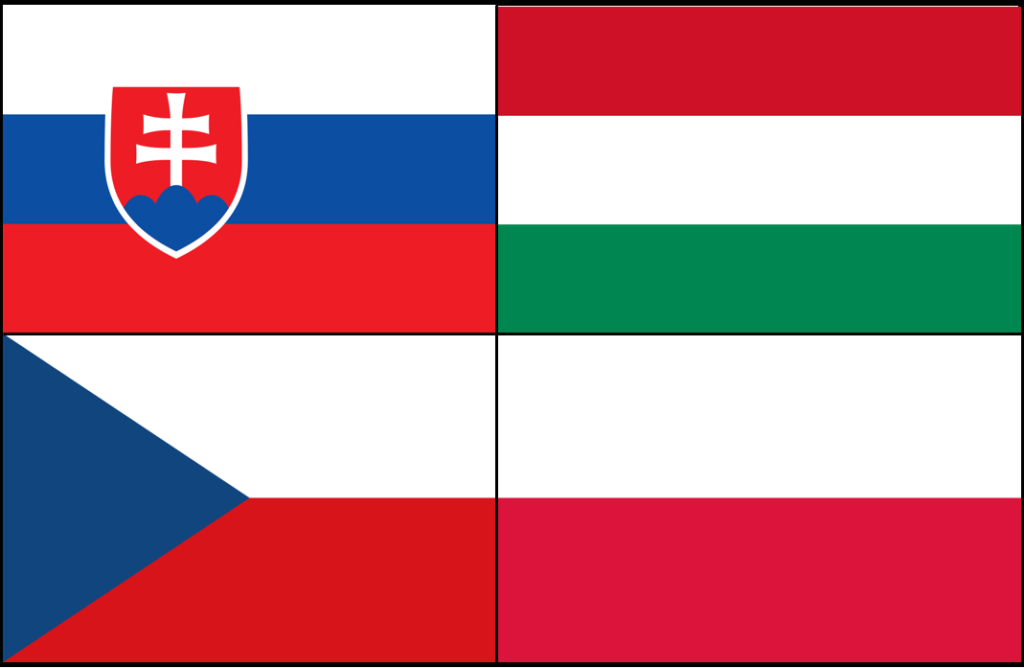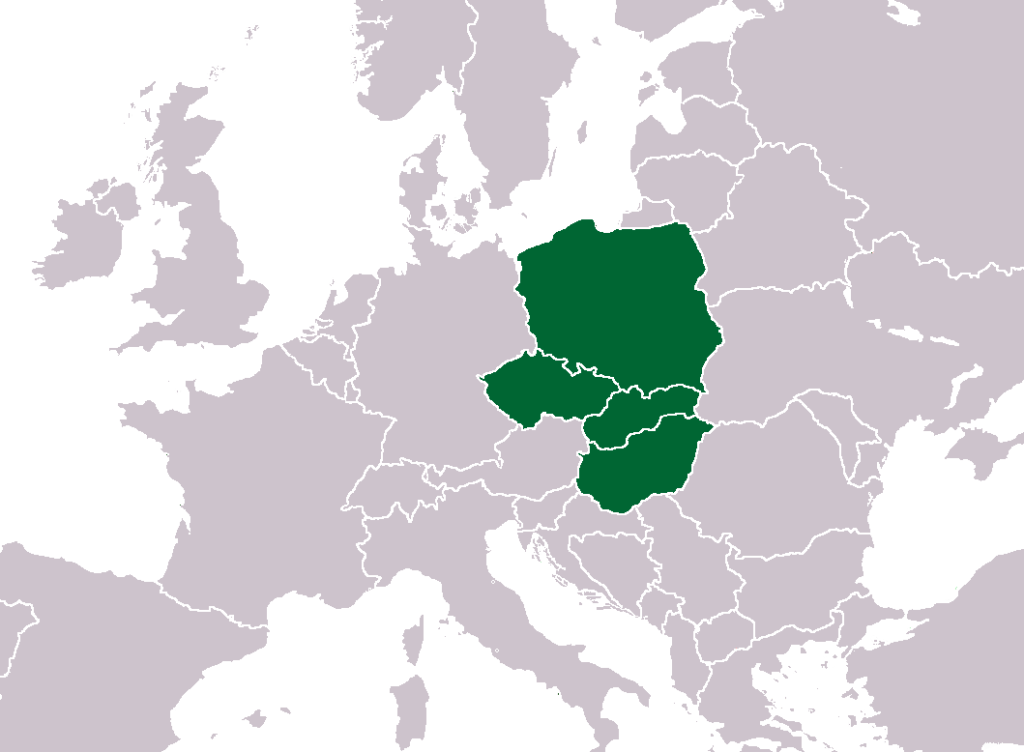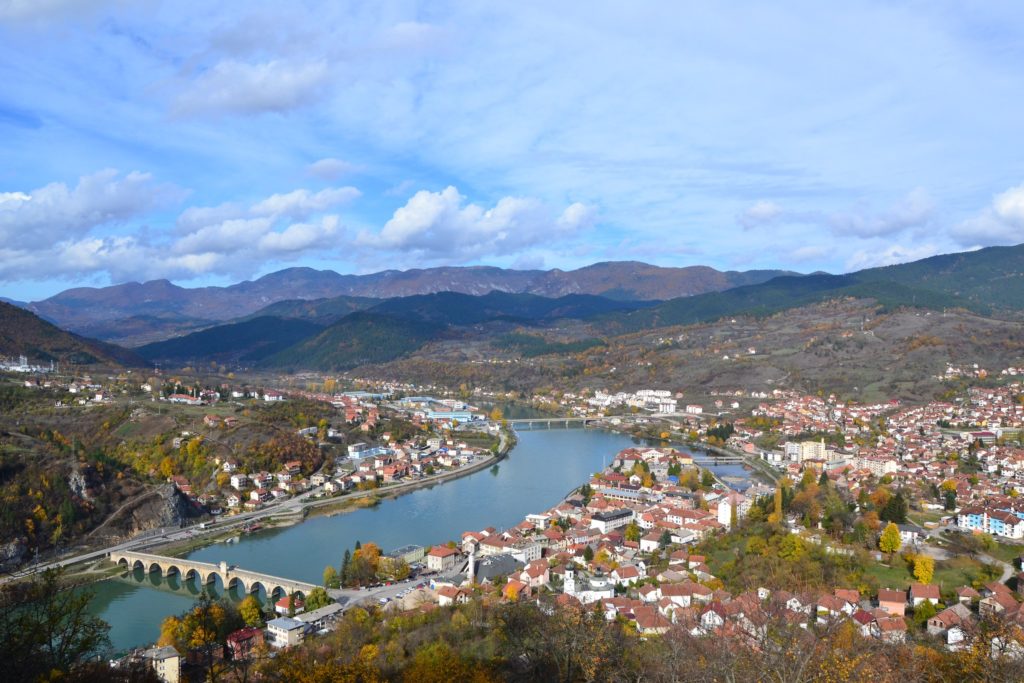Purpose of V4

The Visegrad Group (also known as the “Visegrad Four” or “V4”) was created by the four Central European countries the Czech Republic, Hungary, Poland and Slovakia to enhance cooperation among them and to support achieving joint goals. The Group reflects the efforts of these four countries to work together in a number of fields of common interest within the all-European integration.
The formation of the Visegrad Group was motivated by four key factors:
- Desire to eliminate the remnants of the communist bloc in Central Europe
- Desire to overcome historic animosities between Central European countries
- Belief that through joint efforts it will be easier to achieve the set goals, i.e. to successfully accomplish social transformation and join in the European integration process
- Proximity of ideas of the then ruling political elites.
Czechia, Hungary, Poland and Slovakia have always been part of a single civilization sharing cultural and intellectual values and common roots in diverse religious traditions, which they wish to preserve and further strengthen.
Together in Europe
In the initial years of the V4 existence all the V4 countries aspired to become members of the European Union, perceiving their integration in the EU as another step forward in the process of overcoming artificial dividing lines in Europe through mutual support. They reached this aim in 2004 when they all became members of the EU (1st May 2014).

The Visegrad Group wishes to contribute towards building the European security architecture based on effective, functionally complementary and mutually reinforcing cooperation and coordination within existing European and transatlantic institutions. All the activities of the Visegrad Group are aimed at strengthening stability in the Central European region.
The V4 cooperation can currently be referred to as the most clearly profiled initiative in Central Europe. The backbone of this cooperation consists of mutual contacts at all levels—from the highest-level political summits to expert and diplomatic meetings, to activities of the non-governmental associations in the region, think-tanks and research bodies, cultural institutions or numerous networks of individuals.
The V4 countries are a full-fledged part of the EU where the V4 represents a platform for pragmatic cooperation, not an EU alternative.
The structure and presidency
Visegrad cooperation is not institutionalized in any manner. It is based solely on the principle of periodical meetings of its representatives at various levels stretching from the high-level meetings of prime ministers and heads of states to expert consultations. Official summits of V4 prime ministers takes place on an annual basis. Between these summits, one of the V4 countries holds presidency, part of which is the responsibility for drafting a one-year plan of action.
From July 2018 until June 2019, the Slovak Republic is holding its Presidency of the Visegrad Group. They will be followed by the Czech Republic. The Slovak presidency continues the implementation of initiatives within strategic objectives.
A successful mastering of the Presidency priority topics is based on three assumptions:
- Promoting unity wherever it is possible – we will strive to achieve a consensus in matters which we can jointly promote in a better way at European level
- Offering solutions where it is beneficial – we are interested in a mutual implementation of such projects that have a practical positive impact on citizens in our countries
- Respecting differences where it is necessary – we will seek consensus while fully respecting national interests
The three key priorities of the Slovak presidency are:
- Strong Europe
- Secure Environment
- Smart Solutions
History

The Visegrad Group was formed on 15th February 1991 at a meeting of the President of the Czechoslovak Republic, Václav Havel, the President of the Republic of Poland, Lech Wałęsa, and the Prime Minister of the Republic of Hungary, József Antall. This high-level meeting took place in Visegrad, Hungary, which created an imaginary historical arch linking the idea of this meeting to the idea of a similar meeting, which was organized there in 1335 and was attended by John of Luxembourg, King of Bohemia, Charles I of Anjou (Charles Robert), King of Hungary, and Casimir III, King of Poland. The central motif of the two meetings was the desire to intensify mutual cooperation and friendship among the three Central European states.
Partnership with other bodies and organizations
The Visegrad Group cooperates with other regional bodies, as well as with single countries in the region and beyond on an ad-hoc or regular basis. The Benelux countries, countries of the Nordic Council of Ministers, countries within the EU’s Eastern Partnership and the Western Balkans belong to the Group’s priorities.
More information about the Visegrad Group: http://www.visegradgroup.eu/, https://www.mzv.sk/web/en/foreign-policy/slovak-presidency-of-the-visegrad-group
